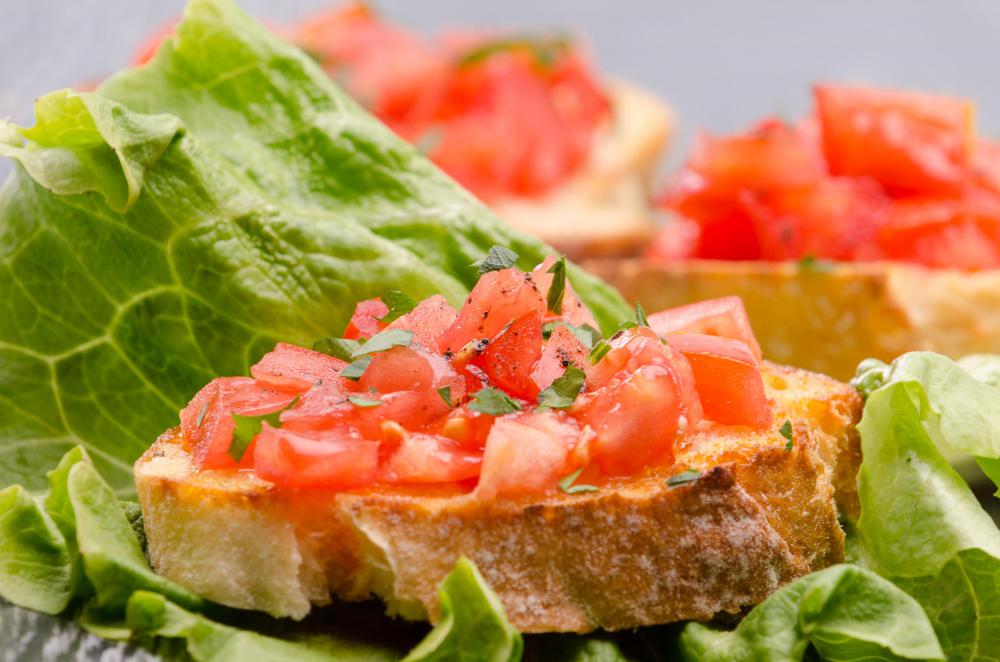At DelightedCooking, we're committed to delivering accurate, trustworthy information. Our expert-authored content is rigorously fact-checked and sourced from credible authorities. Discover how we uphold the highest standards in providing you with reliable knowledge.
What is Pecorino Cheese?
Cheeses made from sheep’s milk often are called pecorino cheeses. They can be hard in texture and sharp and salty in flavor, or medium soft to creamy and mild in taste. Pecorino cheese can be aged for many months, or it can be served as a younger cheese with less pungent flavor development. Grating pecorino onto finished dishes or into sauces is a common use, though some cheeses in this group are sliced thin and served with opening appetizers or cheese plates.
Sheep’s milk cheeses originated in Italy and are still made in regions such as Sardinia and Tuscany. Varieties of pecorino cheese are popular in Western countries and can be found in supermarkets and specialty food shops. Preparation method and length of aging determine the type of pecorino, and one region may produce an entirely different kind of pecorino cheese than another. Most of these cheeses are similar in color, ranging from milky white to pale or golden yellow.

Of the available kinds of pecorino cheese, Pecorino Romano may be particularly well known as a sharper alternative to Parmesan cheeses. Often it is aged in blocks and cut into wedges for sale by weight. Because it is a hard and dry cheese, Pecorino Romano may often be used finely grated over pasta dishes or shaved thinly for topping breads and baked casseroles. It is generally used sparingly because of its saltiness. Recipes may list this cheese interchangeably with Parmesan, though the flavors can be distinctly different.

Younger, less aged pecorino cheeses can have a mild flavor suitable for slicing and adding to sandwiches or serving with crostini or crackers. Smooth creaminess can be achieved in making fresh sheep’s milk cheeses, and they can be eaten in ways similar to ricotta or mozzarella. These pecorino varieties lack the sharpness and saltiness of the older kinds and may be described as fresher or sweeter. They also can be used for mixing with herbs and thin meats such as prosciutto and using as spreads.

Regional distinctions and preferences often determine the type of pecorino cheese. Just as Italy, for example, has different styles of cooking from north to south, cheese makers have different styles of aging and seasoning sheep’s milk cheese. If a taste of Pecorino Romano does not appeal or rings too sharp or salty on the tongue, there will be more mild versions available from other regions and producers.
AS FEATURED ON:
AS FEATURED ON:














Discussion Comments
does pecorino cheese need to be refrigerated when vacuumed packed and shipped from Italy?
@babylove - Mascarpone cheese is very different from pecorino. It comes from the Lombardy region of South Italy, and it's not really even a cheese.
It's soft white cream cheese texture is only the result of a culture called tartaric acid that's added to the cream skimmed from the top of the milk.
Tartaric acid is a natural vegetable acid that must be used when heating the cream. Then it is left to mature and thicken.
Mascarpone is easy to spread and is commonly found in many Italian desserts. It would have been delicious on those Belgium waffles. Oftentimes it is paired with cognac and prepared in sauces.
As you can see, totally different from pecorino, but having had both, I'd recommend you try them -- they're both delicious in their own way.
Does anyone know what mascarpone cheese is? Is it the same kind of thing as pecorino, or not? I seen it on a breakfast menu once that was served with Belgium waffles and honey maple syrup. I love waffles but I opted against them this time for fear of the unknown cheese.
Sheep and goat cheeses usually are a little more expensive than cow's milk cheese but with proper usage and storage you should get your money's worth.
If you wrap the wedges in either wax paper or parchment paper then seal them up in a plastic bag, they should last for several weeks under refrigeration.
If you have shredded, grated or sliced Pecorino cheeses then they should be placed in an airtight container in the refrigerator for a just a few weeks.
If your family is anything like mine though your cheese won't last more than a couple of weeks and you won't have to worry about spoilage. We eat it on everything from scrambled eggs to soups, salads and sandwiches to scrumptious Italian pastas.
Pecorino Toscano cheese is one of my favorite Italian sheep cheeses. It's softer and a lot less salty than the Pecorino Romano cheese which is used more often in Italian dishes.
Pecorino Toscano is a table cheese with a very mild nutty flavor. It's a sturdy cheese that's easy to work with and pairs up well with Italian meats and wines.
It is a little more expensive to buy Pecorino cheese than say your average block of Parmesan. The last time I checked it was up somewhere around sixteen dollars per pound.
Post your comments